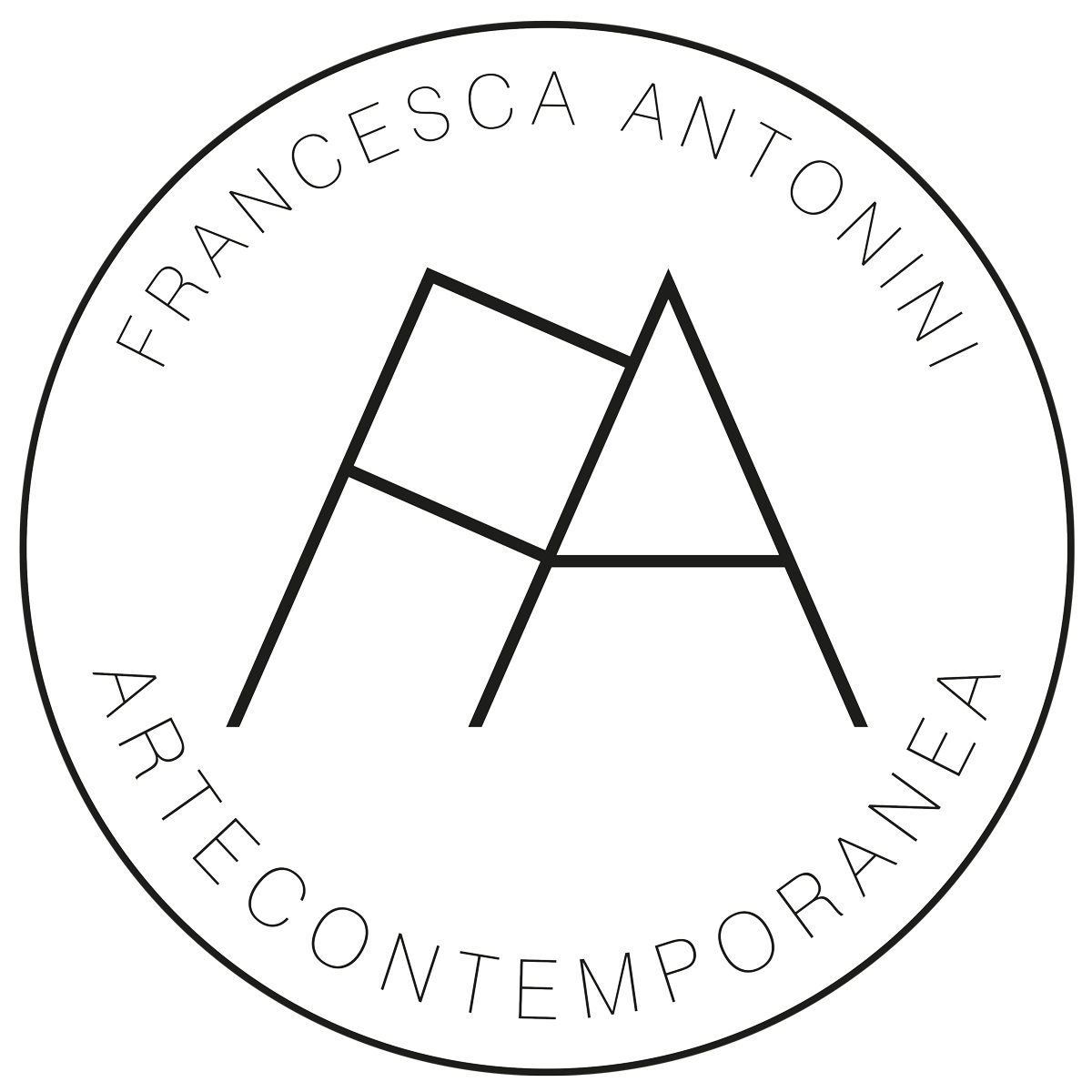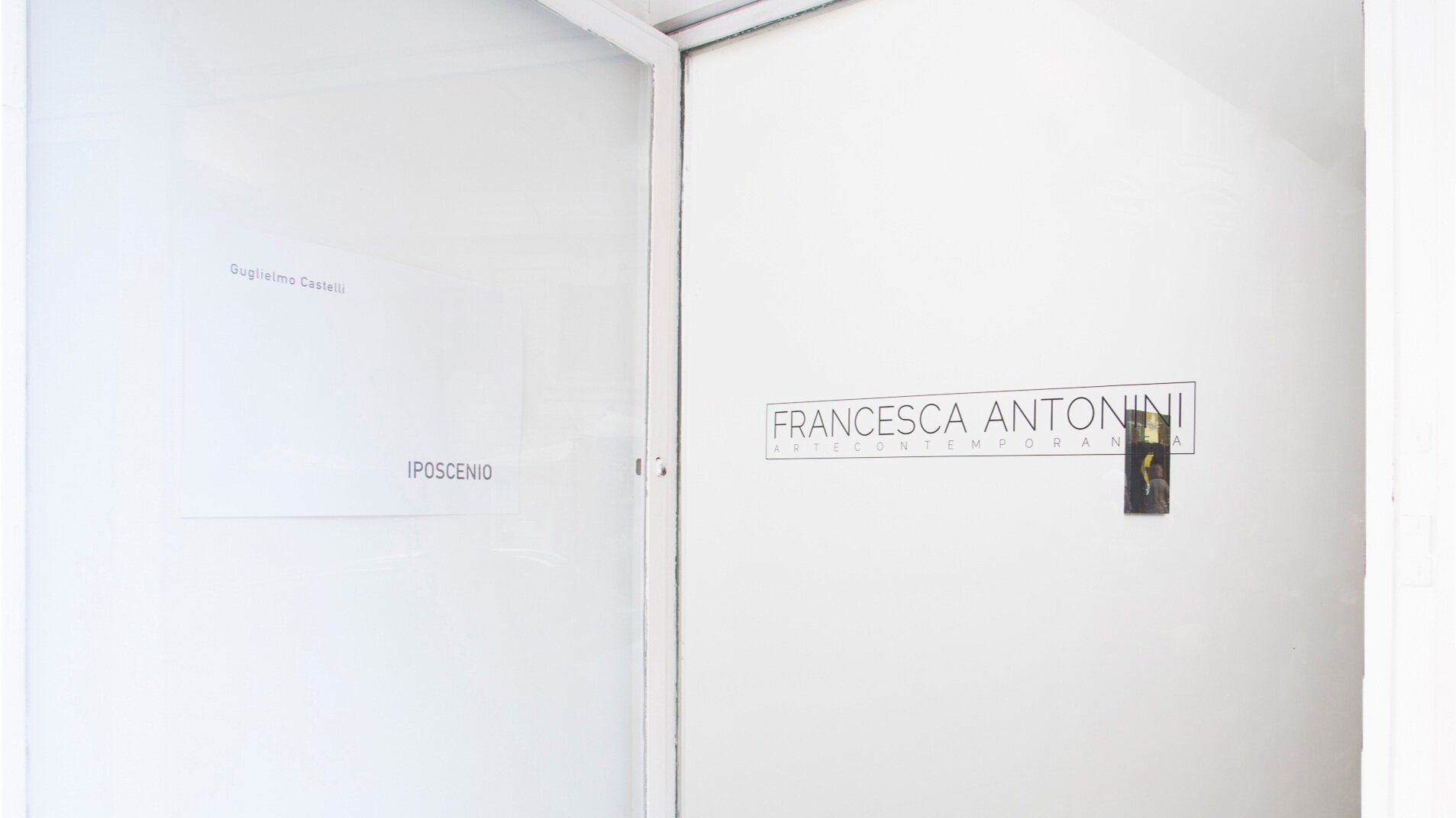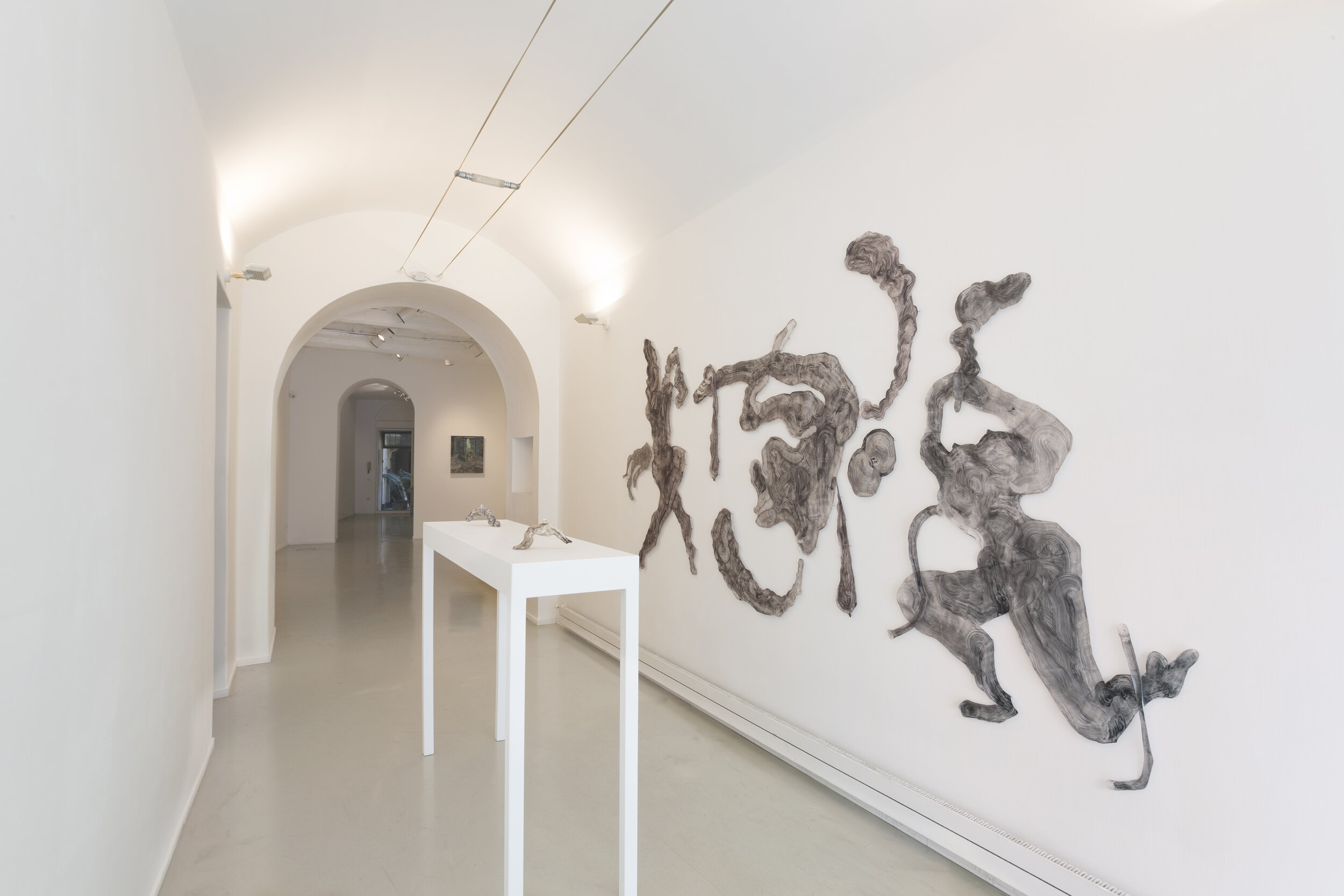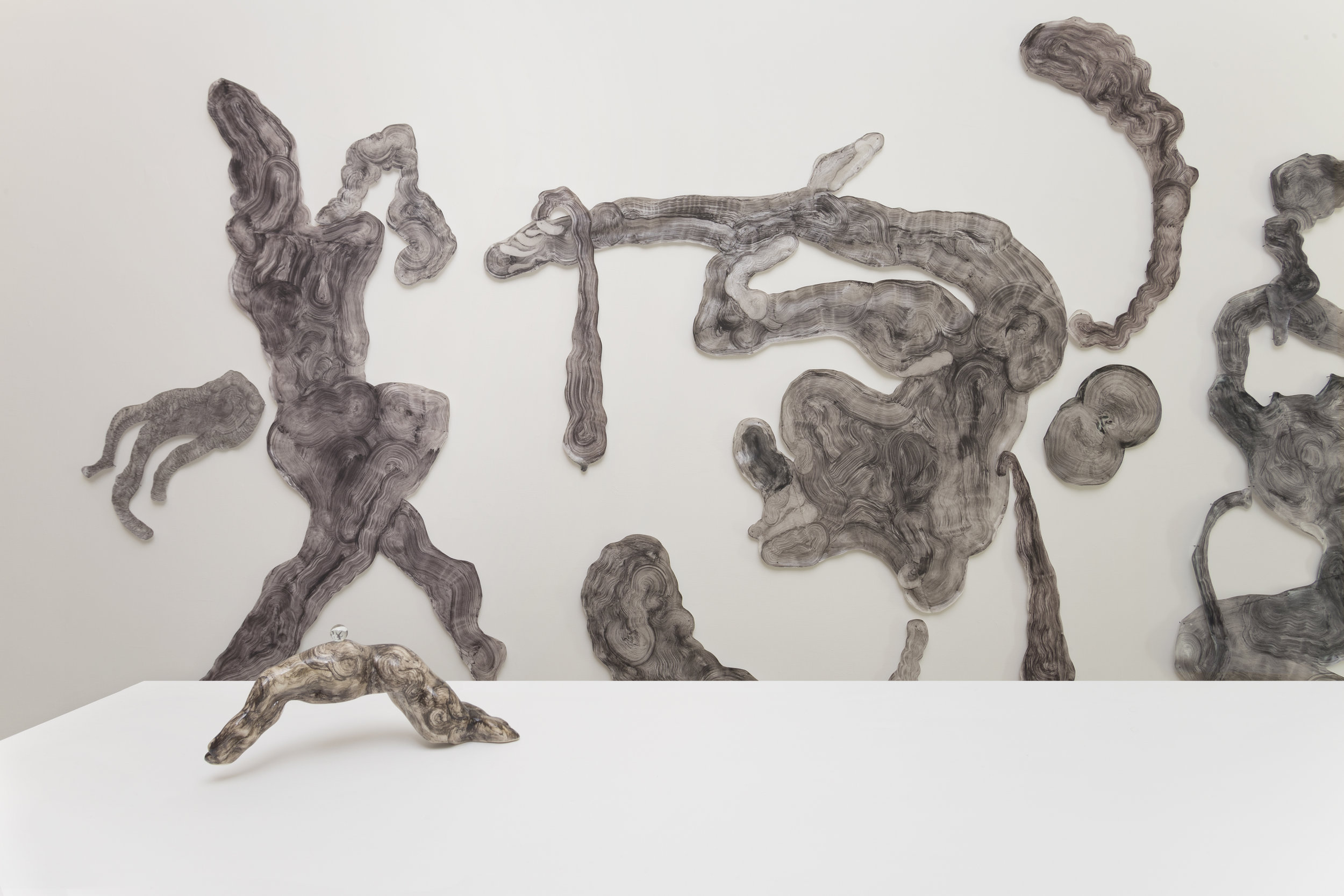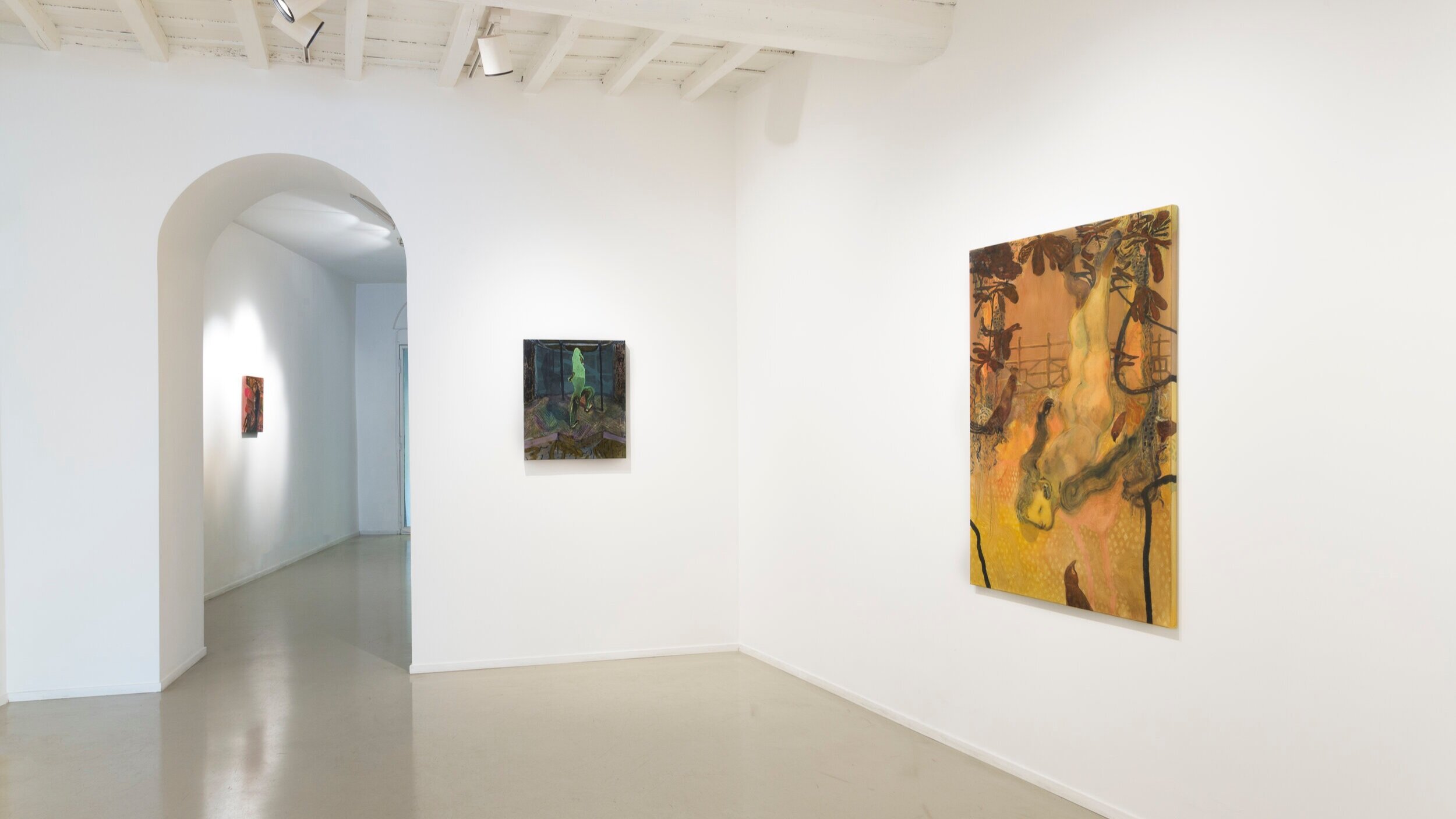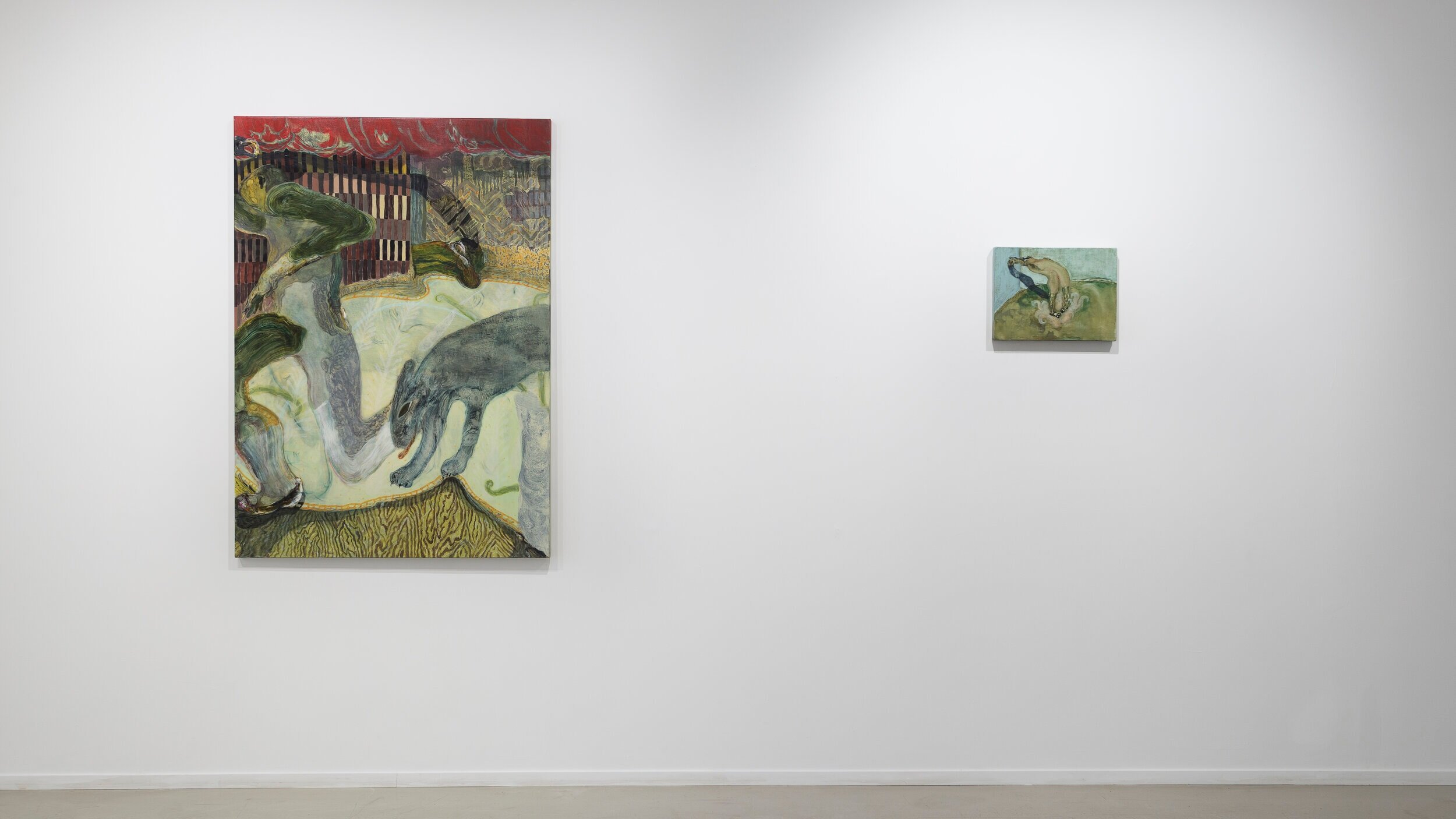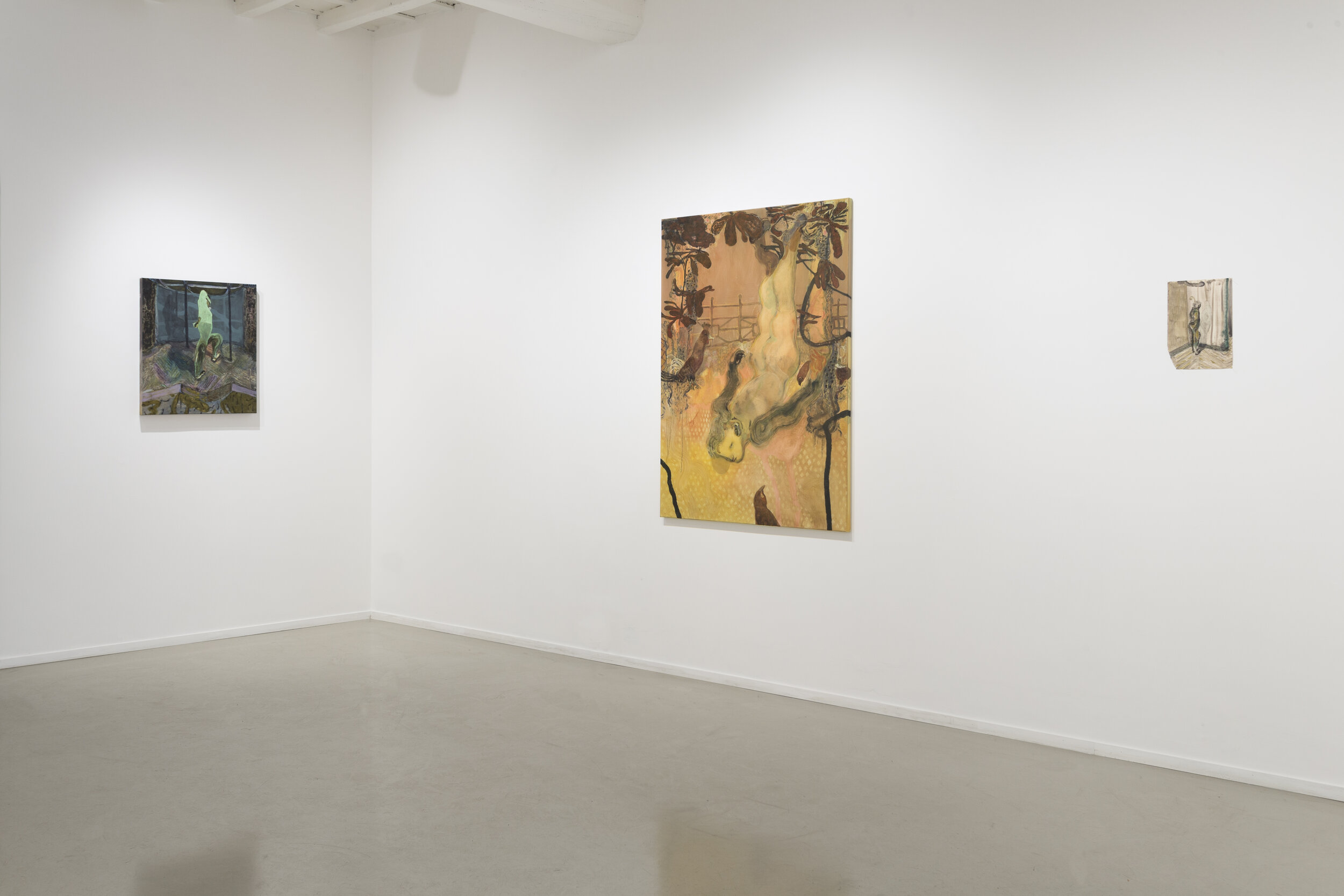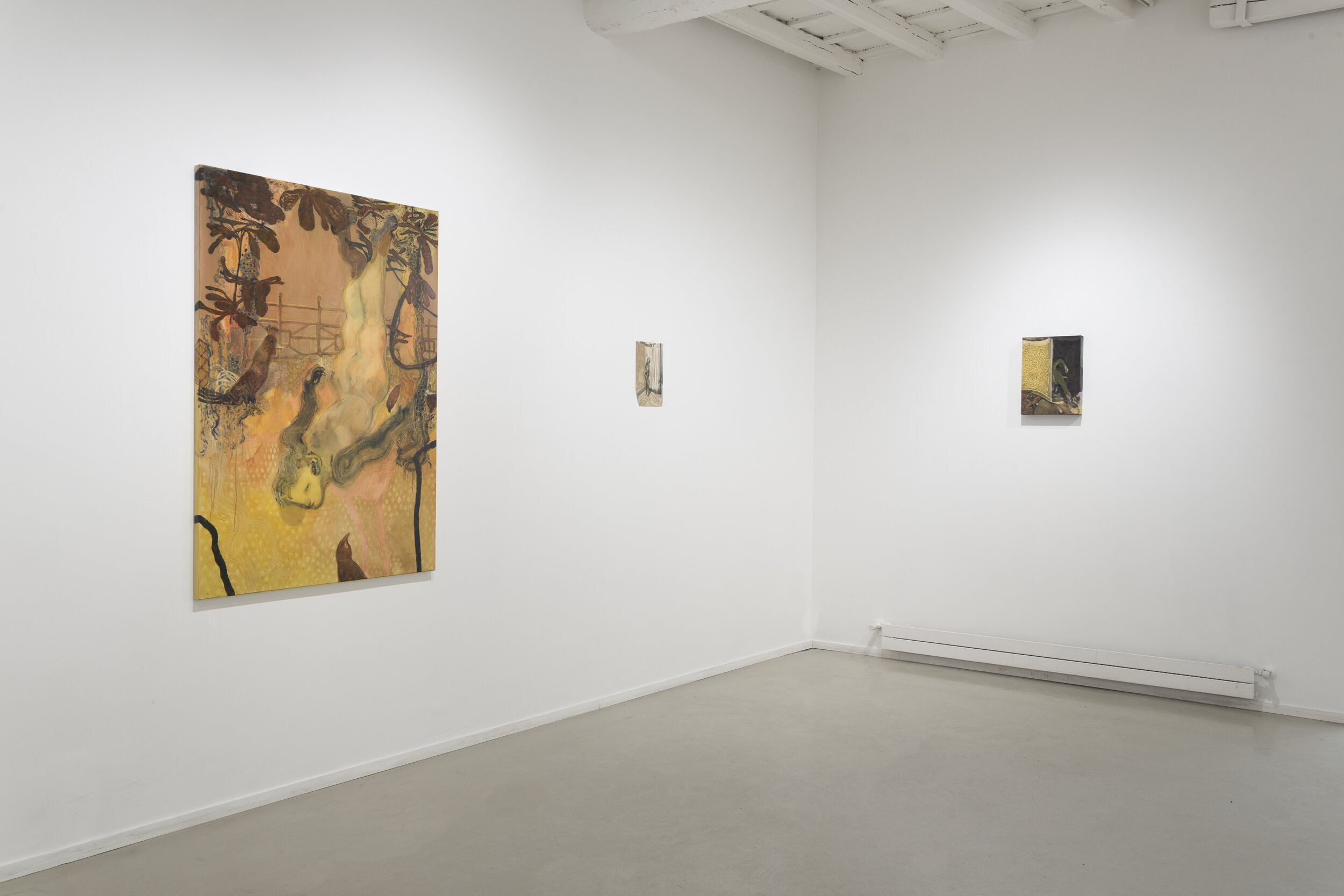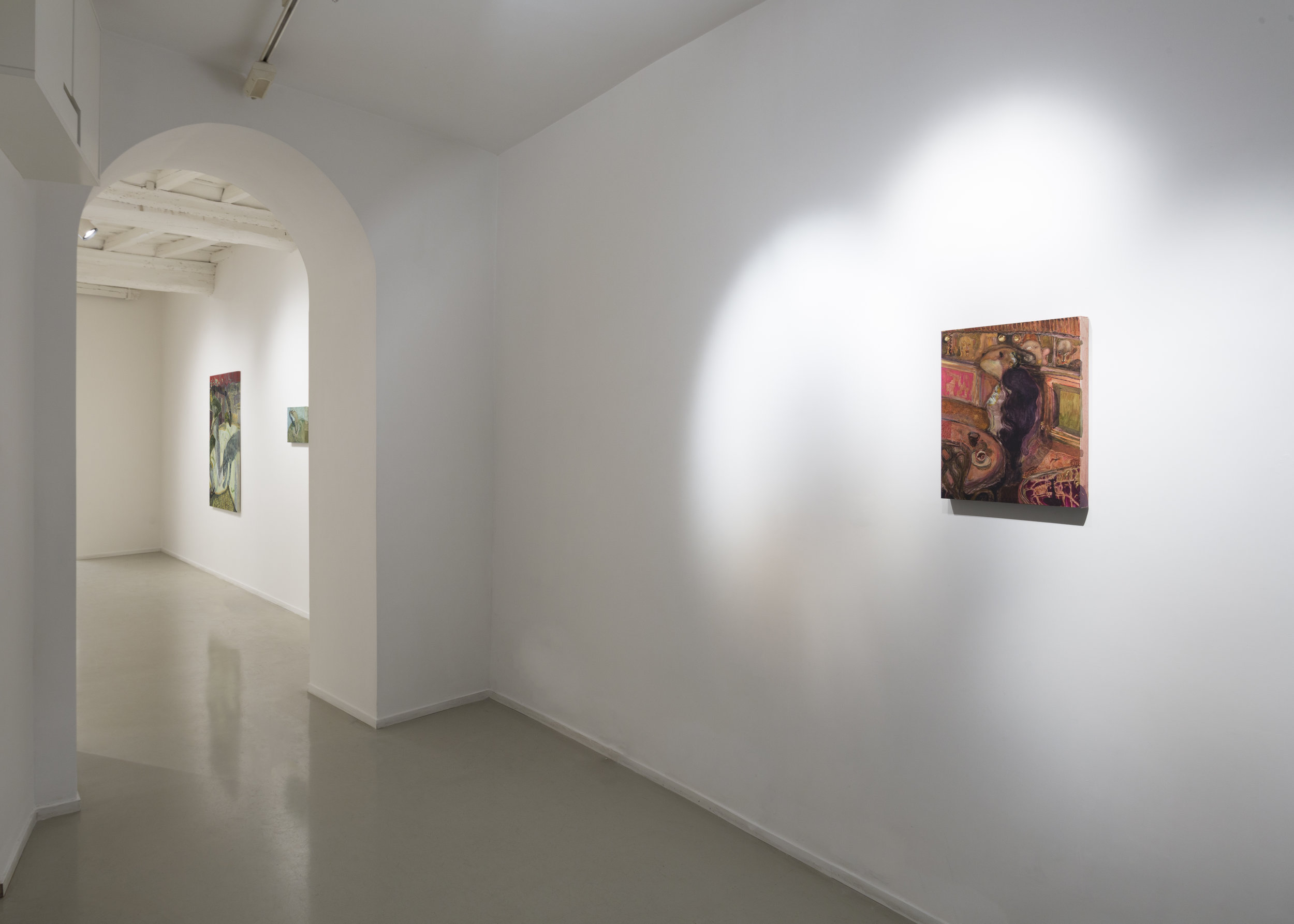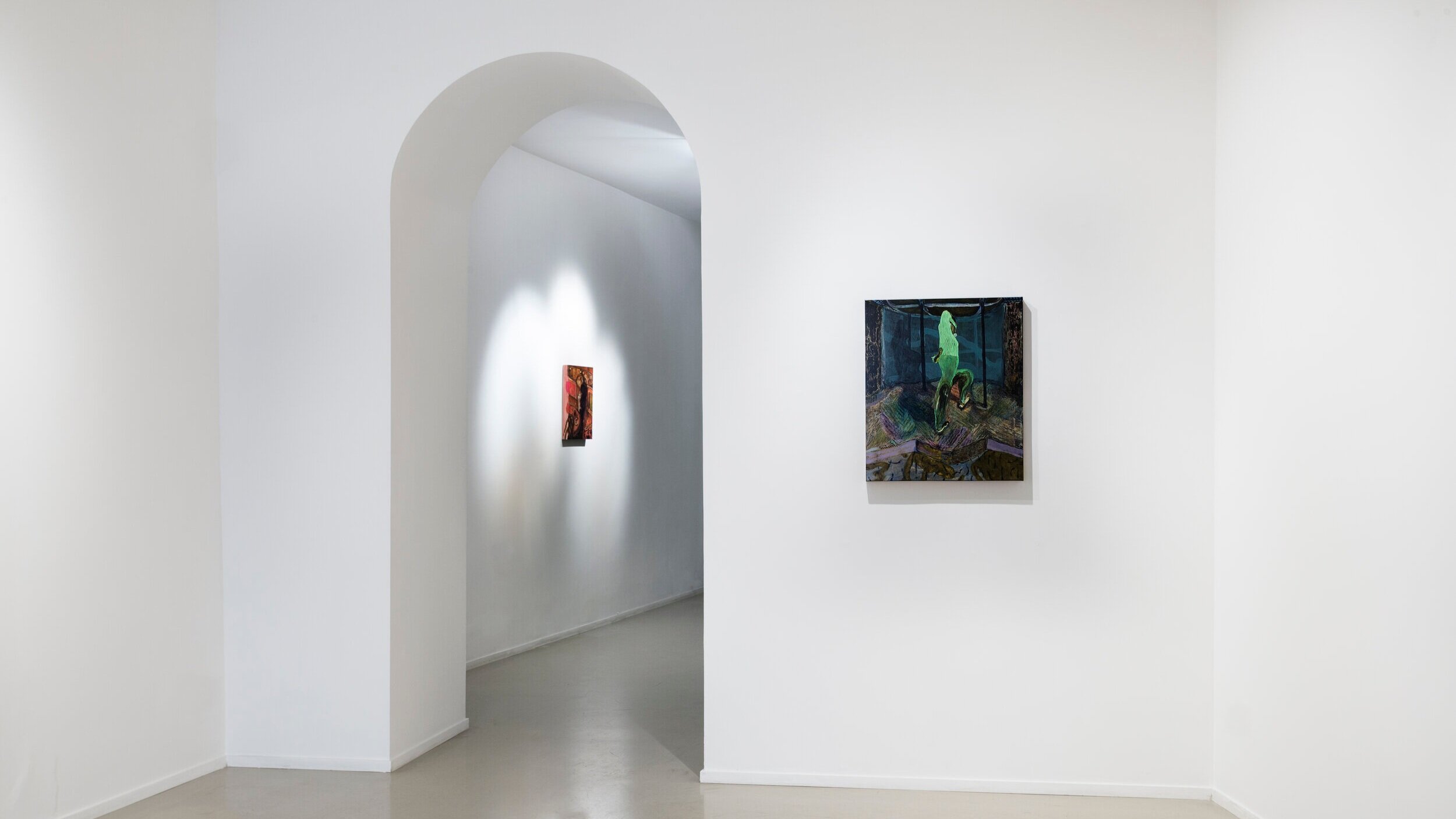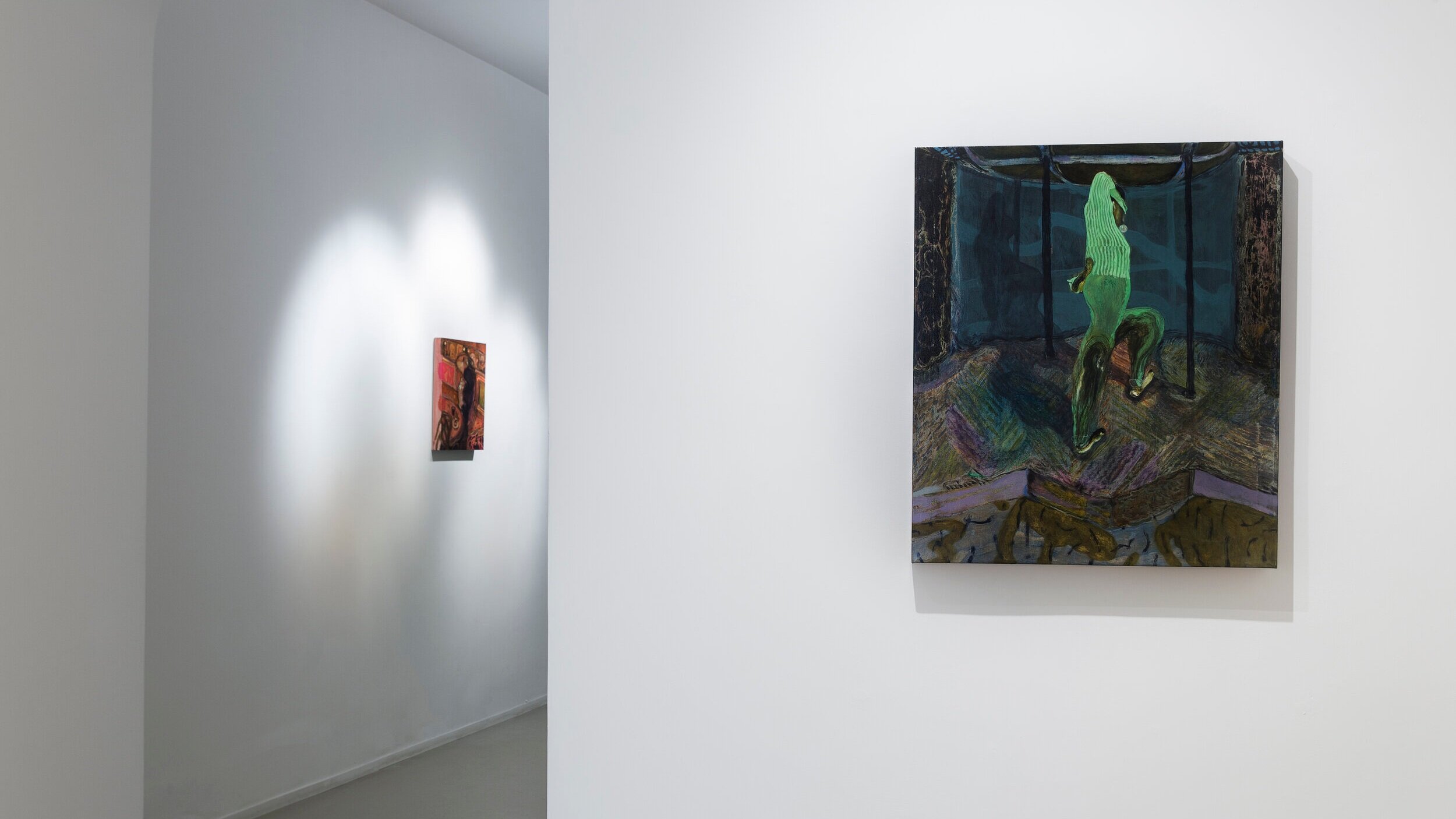IPOSCENIO
GUGLIELMO CASTELLI
OPENING Tuesday MAY 21ST
UNTIL JULY 19TH, 2019
IPOSCENIO
DAVIDE FERRI
There is an image, perhaps an autobiographical one, to which Guglielmo Castelli referred during our conversation in his studio in Turin, no sooner than a month ago: a child who, in order to learn the proper posture at the table, is forced by his parents to eat while keeping two books under his arms.
This image – sordidly violent, recurring in several stories, decisively out of time, about learning the rules of bon ton – made me think about that child in relation to the figures painted by the artist, that I saw around me at the studio: how changes, in an individual, the perception of the changes of the external world, while his body and his mind are dealing with an energy, a tension that propagates from an unnatural act (in the case of the kid evoked by Guglielmo, the grab to keep the books between chest and arms while cutting his food and bringing it to the mouth). And how does the condition of an individual appear, from the outside, whose body is split between an introverted gesture and unavoidable solicitations from the outside? And how does the energy of that body propagate towards the outer world?
There is also another image that marked my encounter with Castelli in his studio, which belongs to art history and has ideally accompanied – as the artist told me – the making of some of the works on display in this exhibition, the third at Francesca Antonini’s: that of Piero della Francesca’s Sogno di Costantino (Constantine’s Dream), a popular fragment of Storie della Vera Croce (Stories of the True Cross) (which, by chance, I had seen a few days before during a short vacation in Arezzo.)
In that painting, the space before an asleep body - that of the emperor placed at the center of the image, inside a rigidly structured canopy - contains a presence - an angel announcing Constantine the revelation of the cross - which originates from the body itself, from the visions that are pervading it, confining the characters in the foreground (three guards struggling with a very practical task, supervising the body of the sleeping emperor) in a dimension where dream and reality overlap.
A sleeping body - or rather an abandoned one - is also depicted in the painting opening the exhibition, the homonymous Sogno di Costantino (Constantine’s Dream), where a figure, whose presence is ushered by a sort of curtain, lies before a bright night sky.
That of Sogno di Costantino (Constantine’s Dream) is also a "stain-body" (or a body made with a juxtaposition of stains of different tones, those of the foot on the foreground, the body and of the head), as it often is in Castelli's works.
"Stain-bodies" actually are also the shapes of the two ceramics pieces that the artist exhibited in the first room of the gallery, where a small glass pearl placed on the top of an apparently indefinite body mass, seems to secure the liquefaction and dissolution movement of the figure in a balanced (also highlighted by lines and brushstrokes on the surface of ceramics, on the skin of the sculpture). Moreover, the two pieces are in a close relation, in the first room, with the big wall intervention entitled Spazio di competenza (Space of competence), where some shapes cut out on pvc materialize a progression of "stain-bodies", floating and moving like a baroque fresco.
_ _ _
The two images - the child keeping books under his arms and Constantine’s Dream - deal with a dimension that belongs to Castelli’s paintings (almost all installed, in this exhibition, in the second room of the gallery), that of a body and the space surrounding it as an emanation of the body itself, therefore an inner and psychological landscape, or - overturning the terms of discourse - of the body itself as an emanation of landscape.
Around this dimension many suggestions coagulate, which refer to the artist's poetics (that particular way in which Castelli bedecks both figure and surrounding environment with the same intensity), to his history and education - a discipline of the body reinforced through semi-professional volleyball, abandoned a few years ago; a training in scenography and an ongoing reflection about theatrical space - and to the history of painting which ended up entering his pieces: Edouard Vuillard’s work, for example - the balance that is established, in his paintings, between the interiority of the subject and external landscape and that some of his lines, his brushstrokes can evoke in certain areas of the canvas; the painting of Francis Bacon as described by Deleuze, an exchange of forces between an isolated figure at the center of the image and the background that revolves around it, minimizing its possibilities of movement.
So: Guglielmo Castelli's paintings are figurative. They show figures (which, with a good degree of approximation, I could identify as actors, dancers, acrobats) that are abandoned and very concentrated in impenetrable actions, manifesting a desire of the body to curl up in its very shell, escaping the viewer’s gaze, and at the same time to expand into surrounding space; figures suspended between inner needs and the unavoidable impulse to relate to the world.
When I saw them for the first time, during an artist’s residency at Macro in Rome, in 2015, the figures painted by Castelli were placed on monochrome backgrounds - like conglomerates (of legs and arms, bodies without organs or bone structure), in unstable balance, subject to sudden swellings and tensions, or struggling with liquid and disjointed poses, clumsy and acrobatic movements, on the verge of breaking or dissolving in the background. They investigated the surface driven by two opposing forces, as if their desire for expansion and dilation in the background was counterbalanced by the presence of certain elements (small props, beams, rods, circles or other dubious gymnastic equipment) aiming at blocking / accompanying their shape, supporting a vertical development, or building a limit, a border, to their movement of expansion and extinction.
The figures painted by Castelli, for some time now, have started to populate a space that I could not name myself - generically an interior, but an interior that is not exactly a room; rather a claustrophobic environment, a narrow and uneven place - that tends to close, to huddle the figure that inhabits it (almost always alone in the image) accompanying or hindering the energy that emanates from its movements. The artist calls this space - as the title of this exhibition suggests – “iposcenio” ("iposcenium"), referring to the theater, to the space underlying the stage, its specular and underground doubling, where heterogeneous elements are combined - fragments of scenographies, hints to future lay-outs (ready to emerge on stage) or ones already consumed by scenic action -; a place of lonely abandons, where the body of the figure is already projected to the outside, in an elsewhere that has happened or is about to happen.
This disjointed relationship between figure and the environment called iposcenium, translates, on the surface, into a syncopated rhythm of leaps and withdraws of some areas and parts of the image, of disproportions, of slowdowns and accelerations, energy exchanges between figure and context, foreground and background. A rhythm of disjointed lines and brushstrokes that proceeds, in a magic balance, between fluidity and breaks.
PRESS REVIEW:
ARTE E CRITICA, ARTFORUM, ARTRIBUNE, IL GIORNALE DELL’ARTE, YOUNG SPACE, LAMPOON, LA REPUBBLICA , VOGUE.IT
